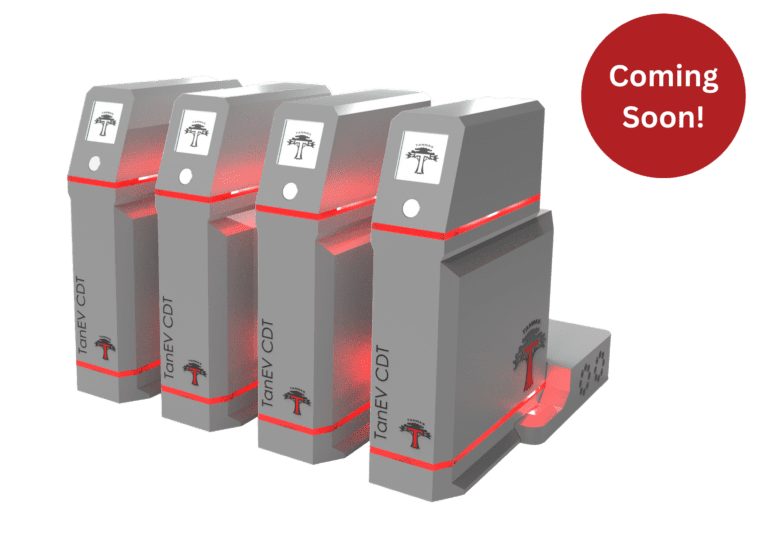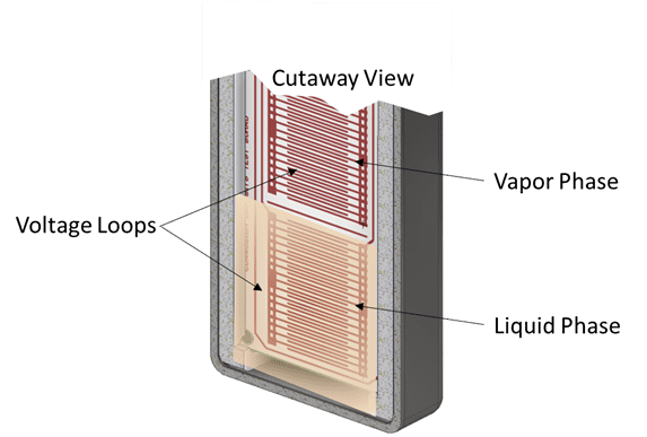
Conductive Deposit Test (CDT)
Test Methods
Conductive Deposit Test: The CDT is designed to determine the tendency of lubricating fluids to form conductive layer deposits on exposed copper motor windings, connectors, and electrical components at elevated temperatures in an Electrified Vehicle (EV) Drivetrain. A specially modified circuit board (PCB) is lowered into 20 mL of test fluid at 150°C for ~500 hours while supplied with a 5V DC signal. The resistance, in Ohms supplied to two voltage loops on the PCB, is measured in both the liquid and vapor phases the duration of the test. A failed test occurs when deposits conduct across copper traces on the PCB.
With the rapid increase in EV mobility of all types (EV, BEV, Hybrid, etc…), the need for EV fluids with special performance specifications and characteristics is critical. Failures in EV motors have been shown to relate to growth of the conductive layer deposits that connect the hairpin locations of the motor winding, providing a pathway for current to flow via the deposit. Exposed copper in the motor winding is the result of either a flaw in the manufacturing process or the failure of the coating during operation. Conductive deposits form from the chemical reaction of the lubricating fluid and copper motor windings and electrical components in very small areas at elevated temperatures. This occurs under electrified conditions both in the fluid and the vapor state causing failures. The CDT test appears to be a good discriminator between passing and failing either vapor and/ or liquid phases of field passing and failing fluid
Continued advancement of the original liquid bath version of the conductive layer deposit test has resulted in the small, non-liquid, TanEV CDT™ with minimal operational setup and teardown steps. It has (4) independent heating/
data units per docking station and works with a QR code to an IOS application for starting/stopping tests and capturing data.


PCB lowered into the 20 mL of test fluid at 150°C for 500+ hrs. with both liquid and vapor phases being measured for the rate of change in resistance.